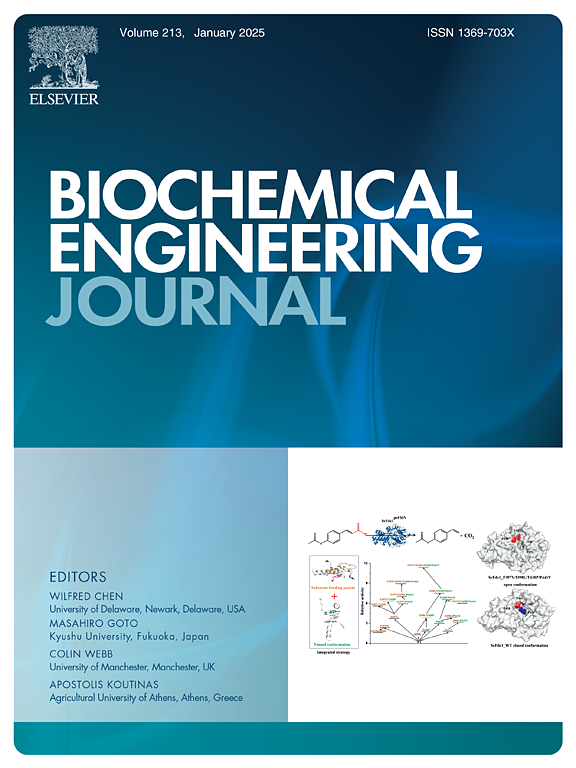Ferrous step-change method for kLa measurement in an airlift bioreactor containing iron sulfate broth for energy storage
IF 3.7
3区 生物学
Q2 BIOTECHNOLOGY & APPLIED MICROBIOLOGY
引用次数: 0
Abstract
The transition to renewable energy will require significant grid level energy storage capacity to maintain electrical supply and demand balance. A biological hydrogen-based energy storage technology using ferric sulfate as an oxidant in a proton exchange membrane fuel cell, termed the BioGenerator, is studied in this work. Operation of the fuel cell generates ferrous sulfate which must be oxidized through use of iron oxidizing bacteria and oxygen in an airlift reactor. The volumetric oxygen mass transfer coefficient (kLa) in the airlift bioreactor is investigated for use in design optimizations to minimize energy expenditure in aeration within the system. A novel high-precision technique of determining kLa profiles in bioreactors using aerobic chemolithotrophs in ferric sulfate broths is explored to meet this goal. The new method makes use of measurable ferrous iron bio-oxidation with a redox probe along with bioreaction stoichiometry to solve for oxygen uptake rate. The procedure, deemed the static ferrous step-change method, is compared against the dynamic biological in-situ method and proves to be superior in terms of scalability, time savings, ease of use, and data quality. Aeration mixing effect on dissolved oxygen homogeneity within the bulk liquid in the downcomer packed bed of semi-pilot and pilot scale airlift bioreactors used in the study are investigated. The developed static ferrous-step change method may be applicable for practical use in any operation where aerobic iron-oxidizing acidophilic microbes are present in iron sulfate based liquor or leachate, potentially useful in processes such as copper or uranium extraction.
求助全文
约1分钟内获得全文
求助全文
来源期刊

Biochemical Engineering Journal
工程技术-工程:化工
CiteScore
7.10
自引率
5.10%
发文量
380
审稿时长
34 days
期刊介绍:
The Biochemical Engineering Journal aims to promote progress in the crucial chemical engineering aspects of the development of biological processes associated with everything from raw materials preparation to product recovery relevant to industries as diverse as medical/healthcare, industrial biotechnology, and environmental biotechnology.
The Journal welcomes full length original research papers, short communications, and review papers* in the following research fields:
Biocatalysis (enzyme or microbial) and biotransformations, including immobilized biocatalyst preparation and kinetics
Biosensors and Biodevices including biofabrication and novel fuel cell development
Bioseparations including scale-up and protein refolding/renaturation
Environmental Bioengineering including bioconversion, bioremediation, and microbial fuel cells
Bioreactor Systems including characterization, optimization and scale-up
Bioresources and Biorefinery Engineering including biomass conversion, biofuels, bioenergy, and optimization
Industrial Biotechnology including specialty chemicals, platform chemicals and neutraceuticals
Biomaterials and Tissue Engineering including bioartificial organs, cell encapsulation, and controlled release
Cell Culture Engineering (plant, animal or insect cells) including viral vectors, monoclonal antibodies, recombinant proteins, vaccines, and secondary metabolites
Cell Therapies and Stem Cells including pluripotent, mesenchymal and hematopoietic stem cells; immunotherapies; tissue-specific differentiation; and cryopreservation
Metabolic Engineering, Systems and Synthetic Biology including OMICS, bioinformatics, in silico biology, and metabolic flux analysis
Protein Engineering including enzyme engineering and directed evolution.
 求助内容:
求助内容: 应助结果提醒方式:
应助结果提醒方式:


